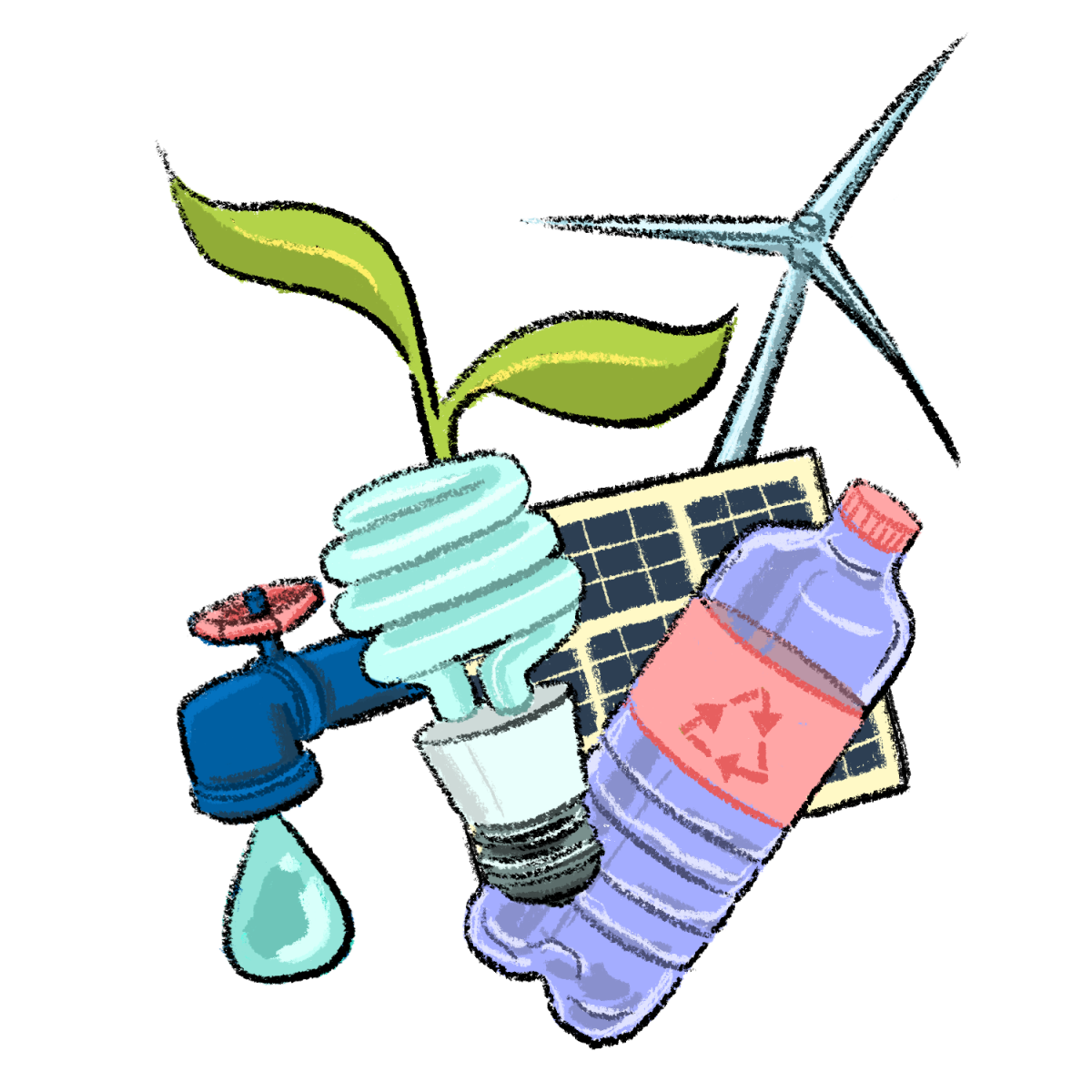
Graphic by Anna Lee/Technician
sustainability graphic
Being sustainable is more important than ever — it helps our environment preserve natural resources for future generations.
However, there are common misconceptions around sustainability that might be holding people back from implementing sustainable practices at home or considering the environmental impacts of the products they consume daily.
Myth 1: Sustainability is expensive
While the cost of sustainable products may appear higher than traditional products, that’s because the raw materials used to create them are more expensive.
Jessica Yinka Thomas, director of Business Sustainability Collaborative, said historically, it’s true: sustainable products have been more expensive than their equivalent traditional products. However, that value represents more closely the true cost of the product.
“You might have, for example, a company that’s making a shoe in a more sustainable manner,” Thomas said. “So you might pay $20 for [other] shoes, but the cost of that pair of shoes is being borned by the people, who don’t have fair wages and fair employment. …That sustainable shoe might cost twice as much, it might cost $40. But I think that $40 much more closely represents the true cost.”
What then is the alternative? If sustainable products are expensive, what should we do? The truth is that not all sustainable practices are expensive, as the most sustainable habit of all is to stop consuming unnecessary products.
“I think the most sustainable product is the product you don’t buy,” Yinka-Thomas said. “I am 100% advocating for us to really think about how to be a conscious consumer, we only buy the products and services that you really need and that really bring value to your life.”
Myth 2: Is paper better than plastic?
Neither. Using paper bags may seem more eco-friendly than using plastic bags; however, both are harmful to the environment in different ways.
Eda Kemahlioglu-Ziya, assistant professor in Operations & Supply Chain Management, said that plastic might not be the most environmentally friendly material because it does take a lot longer to decompose and it’s also a petrochemical. Petrochemicals are chemicals manufactured from crude oil and natural gas, distinct from fuels and other products.
Stores have been implementing the use of paper bags instead of plastic ones. The sole sustainable aspect of paper bags is that the material is recyclable, but the process emits more air and water pollution. For this, the most sustainable option is using reusable bags.
“We have this, reduce, reuse and recycle ethos,” Kemahlioglu-Ziya said. “If you can reduce it or not use it at all, that’s the best. If you can reuse it, that’s a little less bad. And recycling is sort of the lowest form or lowest level.”
Myth 3: It’s better to buy clothes from luxury brands than fast fashion
While it might be cheaper, it’s time to move away from fast fashion — not only is it bad for the environment, but it relies on cheap labor. That being said, it’s also important to think about where you’re buying clothes from, since purchasing from luxury brands doesn’t mean you’ll have access to more sustainable clothing.
“Part of the problem with the secondhand apparel market is there’s just so much junk out there,” Thomas said. “There’s so much fast fashion that nobody wants to rebuy.”
Thomas said a great tip when buying clothes is to look for B-Corp certified brands, or companies that have met the highest numerical standards of social and environmental impact.
“If you’re going to buy something new, [I] encourage people to look for that B-Corp certification,” Thomas said. “Whether it’s an apparel product, or if it’s a food product, or whatever it might be. … Those are the companies that have really demonstrated their sustainability in a way that’s quantifiable, in a way that’s rigorous, in a way that looks across their value chain.”
Sustainability practices may appear more expensive up front, but it may be cheaper in the long term if you start employing more eco-friendly habits. Not only these practices can help someone become slightly more ecologically sustainable, but they can help create a ripple effect for future generations to have more accessibility to alternatives that help the environment.